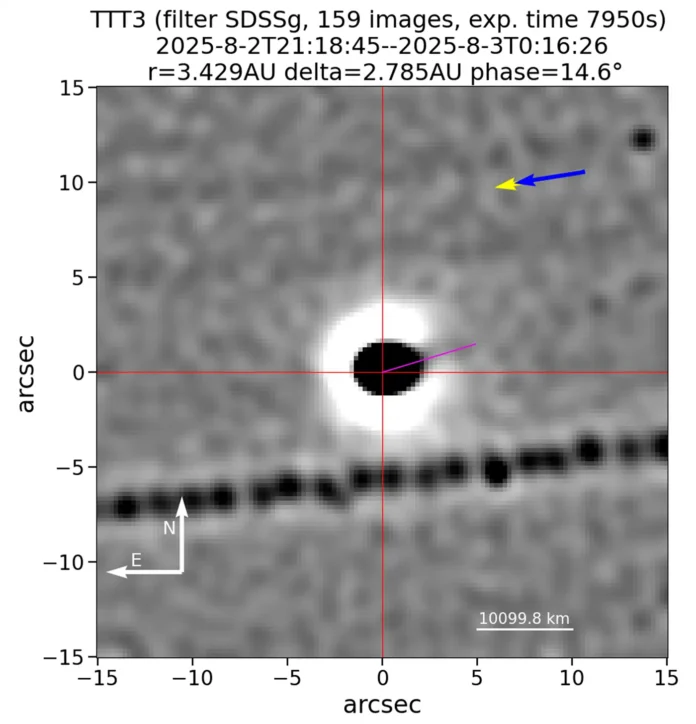
Key Developments
- Harvard astrophysicist Avi Loeb argues that 3I/ATLAS doesn’t behave like a typical comet and may warrant hypotheses beyond natural origin.
- Among the anomalies: a jet pointed toward the Sun (“anti-tail”), a high nickel-to-iron ratio in its gas plume, and an orbit aligned within ~5° of the ecliptic – odds Loeb places at under 0.2 % for a natural interloper.
- The object will reach perihelion on≈ October 29, 2025, slipping behind the Sun’s glare — during which any unseen influence (solar gravity, flares, jets) could theoretically affect its post-sun emergence trajectory and what we see when it returns to view.
MOUTAIN VIEW, CA – The object 3I/ATLAS (also designated C/2025 N1) was discovered on July 1, 2025 by the ATLAS survey telescope in Chile. Its path is hyperbolic (unbound) and thus interstellar — only the third confirmed visitor of this kind after ʻOumuamua and Borisov.
What makes it more unusual: its orbital plane lies within about 5° of the solar system’s ecliptic (the plane of the planets) despite being retrograde (moving opposite the usual direction). Loeb emphasizes this as a low-probability coincidence if purely random.
The anti-tail (sunward jet).
Perhaps the most visually compelling anomaly: Hubble imaging on July 21, 2025 captured an extended glow pointing toward the Sun, only ~10° off the object-Sun direction. According to Loeb & Keto, if that jet were oriented sideways it would appear ~10× longer — implying a strong directed outflow sunward. Center for Astrophysics
Later, the Two-meter Twin Telescope (TtT) at Teide Observatory in the Canary Islands took 159 exposures (50 s each) on August 2 showing a faint jet pointed toward the Sun, extending ~6,000 km from the nucleus.


